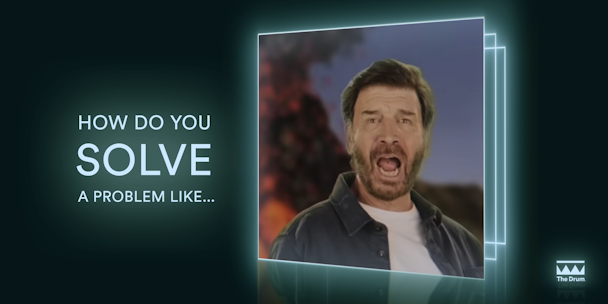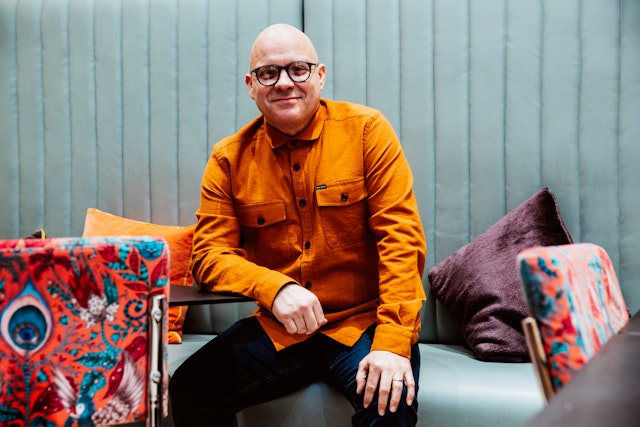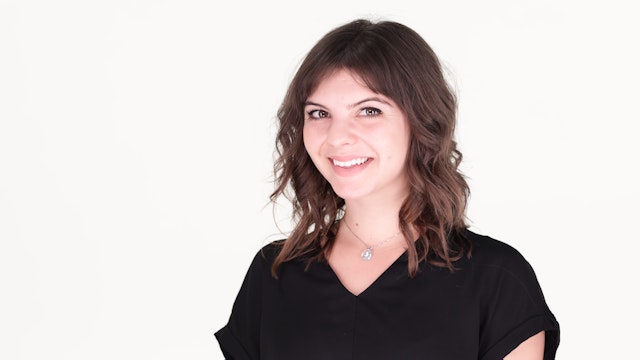Consumers love weird, but it’s hard to do well. Here’s how to ground a surreal spot
Following the release of some offbeat work for big brands, we ask agency heads how to make a success of a surreal creative idea.

Nick Knowles in McCann’s latest effort for Shreddies
Mother’s recent spot for Trainline and McCann’s new work for Shreddies are funny, eye-catching and both a little odd. The public often love this stuff, and some of the best-loved ads of all time, such as ‘It’s a Tide ad’ or ‘Gorilla’, are pretty off-kilter.
It doesn’t always work, though – the strange, coy abstractions we’ve seen over the years from the perfume/cologne category rarely get much love from audiences.
To find out how to get it right, we asked agency experts from across the industry how, when presented with a great, off-kilter creative idea for a spot, they decide how weird the work should go while retaining mass appeal.
Advertisement
How do you solve a problem like... selling with surrealism?
Andy Tamayo and Alexander Allen, creative directors, Gut Miami: “Strange’ ideas are actually not that strange at all, since they should have the DNA of the brand at the core. For example, we recently launched the Philadelphia Cream Cheese ‘Tax-Free Bagel.’ Our team found out New Yorkers pay tax if they order a sliced bagel with cream cheese (a bagel that’s sliced is legally a prepared food). So, we created a special bagel with cream cheese stuffed inside it so it didn’t need to be sliced—helping people evade this weird tax. If you prove the idea is in the brand’s DNA, you’ll always sell your ‘strange’ ideas. Philly doesn’t have anything to do with tax evasion, but they have everything to do with bagels.”
Richard Pinder, chief executive, Rankin Creative: “At Rankin Creative we say we Question Everything. Do that and you find very clear solutions for problems like this. Unearthing the real truths of brands and properly interrogating how they should turn up in the lives of their audiences leads to greater chances of firstly ensuring the relevance of an idea to the brand and its equities. And secondly getting traction with the audience. To do something that is irrelevant to the brand is as much a crime as to do something that has no interest to the audience. Surprising ideas then become the only currency, not the outlier.“
Advertisement
Robert Fletcher, executive creative director, Isobel: “In brief. There’s a basic rule I’ve written for teams. You’ve got two feet. One foot is your idea. The other foot is the execution. You must keep one foot on the floor. Doesn’t matter which. If your idea is out there then execute it straight. And vice versa. Take both feet off the floor and you’ll fall over. Of course, it’s a lot more complicated than that, but that’s the general drift.”

Guy Bradbury, creative partner, M&C Saatchi London: “As Byron Sharp once said, “Distinctiveness is more important than differentiation.” But that doesn’t mean you should just make surreal work for the sake of it. Campaigns must create those memory structures in our brains that make the brand easy to recall when we are ready to buy. And land a core thought. Old Spice did this brilliantly well: ’Inviting ladies to look at their man now back to me’, landing that it’s a man’s body wash. For me, distinctive assets should reinforce the core brand idea and build positive associations rather than being visuals that are not worthy of staying in our memories.”
Suggested newsletters for you
Bas Korsten, global chief creative officer, Wunderman Thompson: “Surrealism is in, because realism is out. If you think about the state the world is in right now, we need ways to escape. We need humans to do more crazy and outrageous things than generative AI ever could (in the next year at least). I think that also explains why Everything Everywhere All at Once won Best Picture this year. Or why ’The Mammoth Meatball’ took the world by storm. People need surrealism to not have to deal with reality for a few, scarce moments. And that trend is not going away. It’s only growing.“
Toby Allen, executive creative director, The&Partnership: “Singing vulvas. Drumming gorillas. A tiny bulldog saying ‘I love you’ in an engagement ring box. Surrealism has always been part of advertising. So after years of earnest & authentic purpose-driven content – much of it laudable but much of it dull – it was inevitable the wheel would turn again. You can see that in the Trainline work which both leans into and pushes against sustainability tropes. As for Shreddies, expect more of the same with AI and our capacity to visualize whatever batshit crazy ideas pop into our heads. Mankind, and machinekind, cannot bear much reality.“
Jed Cohen, executive creative director, Mother Los Angeles: “My golden rule is always, the weirder the idea the more responsible it needs to be. Work that’s crazy or surreal just for the sake of it is probably going to have a hard time selling. If the conversation becomes about how this thing solves a problem and is grounded in a real strategic insight, then you don’t have to have the conversations about like…how many heads should the skateboarding monkey have? You’ve got all the permission you need for your execution to be crazy and irrational because the reason it exists is actually really smart and rational.”
Mitch Markussen, creative director, Hanson Dodge: “The creative team, Mike and Maddy (names have not been changed to hide their identity) came to me with an idea: to increase awareness, they wanted our client – Mi’s Westside Comedy Theater (WCT) – to launch its own scent (WCT is located in Santa Monica, with the entrance in an alley and not well-known). With a quizzical look on my face, I shifted uncomfortably in my chair. Almost in unison, they said ’because something smells funny in here.’ Made perfect sense. Surreal. But a familiar phrase used in an unexpected context. Client loved it.”

Amanda Hough, associate director, digital strategy, RPA: “It really comes down to knowing your target audience — putting their sensibilities first. There is so much humor that edges on wacky and surreal (thanks especially to Gen Z). A better understanding of which humor types resonate with your target ensures which ones will perform well and not alienate too much. Social media is an especially great place to start when it comes to humor research. Looking at social media content surrounding a particular topic or trope happening in culture, and how your target is responding to it with humor is another lens to better understand which wacky approaches will work well.“
Wade Alger, group creative director at GSD&M: “When presented with something off-kilter, you must ask yourself, is it “weird for weird sake” or is there some human truth, brand truth or even better a combination of both in the idea? If the answer is yes, then it will work. If not, then you risk putting something odd out there with zero reason. Shreddies works because they chose Nick Knowles. Geico used a camel who was happiest on Wednesday. A talking camel would be weird for weird’s sake, but one excited about Wednesday (hump day) makes sense. That said execution is what matters most. Never skimp or shave there. You’ll be DOA.”
Rowenna Prest, chief strategy officer, Joint: “Advertising has a long and proud history of famous surreal creative campaigns from Silk Cut through to Tango and Ikea. And there’s a very good reason for this, they work. We’re emotional beings, making decisions with our hearts, then post-rationalizing with our heads, so how an ad makes people feel is key to effectiveness. Feelings aren’t rational and what generates them doesn’t necessarily have to be rational either. So when presented with a surreal creative idea, you have to stop judging it with rational criteria and instead think about how this would make people feel about the brand you’re supporting. And beware of trying to shave the edges off, go all in for maximum feels and effectiveness.“
Nick Spink, creative director, Cheil UK: “With two teenage children constantly consuming, creating and sharing the oddest of content, I already feel like I’m living in a surreal world. For me, the odder the idea is, the stronger its impact and recall – especially when that idea is rooted within the brand promise or product offering. I love being taken on a journey to where I’ve never been before, and the Trainline spot certainly does that. Let’s face it, like it or not, we live in a world where the boundaries of reality continue to be pushed, and personally, I quite like that.”
Mark Shanley, creative director, Adam&EveDDB: “I love weird. Because it’s provocative. But it’s harder. Harder to write. And much harder to sell. One person’s playful is another person’s ’why in the name of God would I want my brand associated with this weird shit?’ Which I suppose is a fair question. Because weird is a risk. Not everyone will like it. But isn’t that true of all advertising anyway? So forget mass appeal. If it’s right for the brand and it gets people talking about the work, love it or hate it, I’ll take that over people not talking about it at all any day of the week.”
Dan Fernandez, executive creative director, EveryFriday: “It starts with truth. Does the brand have permission to play in a surreal space? Does it come naturally? Then it’s about conviction. If you worry about pleasing everyone it won’t end well. You can’t be 95% weird. So you’re gonna need all the people around the work to be ready to go all in.“
Want to join in the debate? Give me a shout: sam.bradley@thedrum.com

